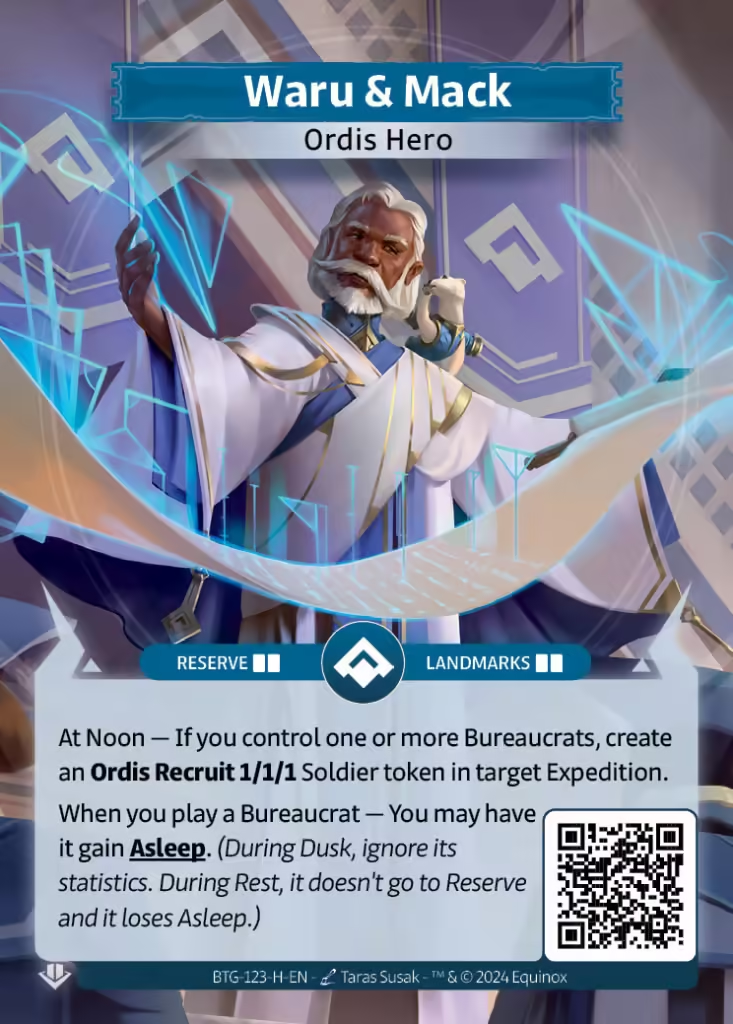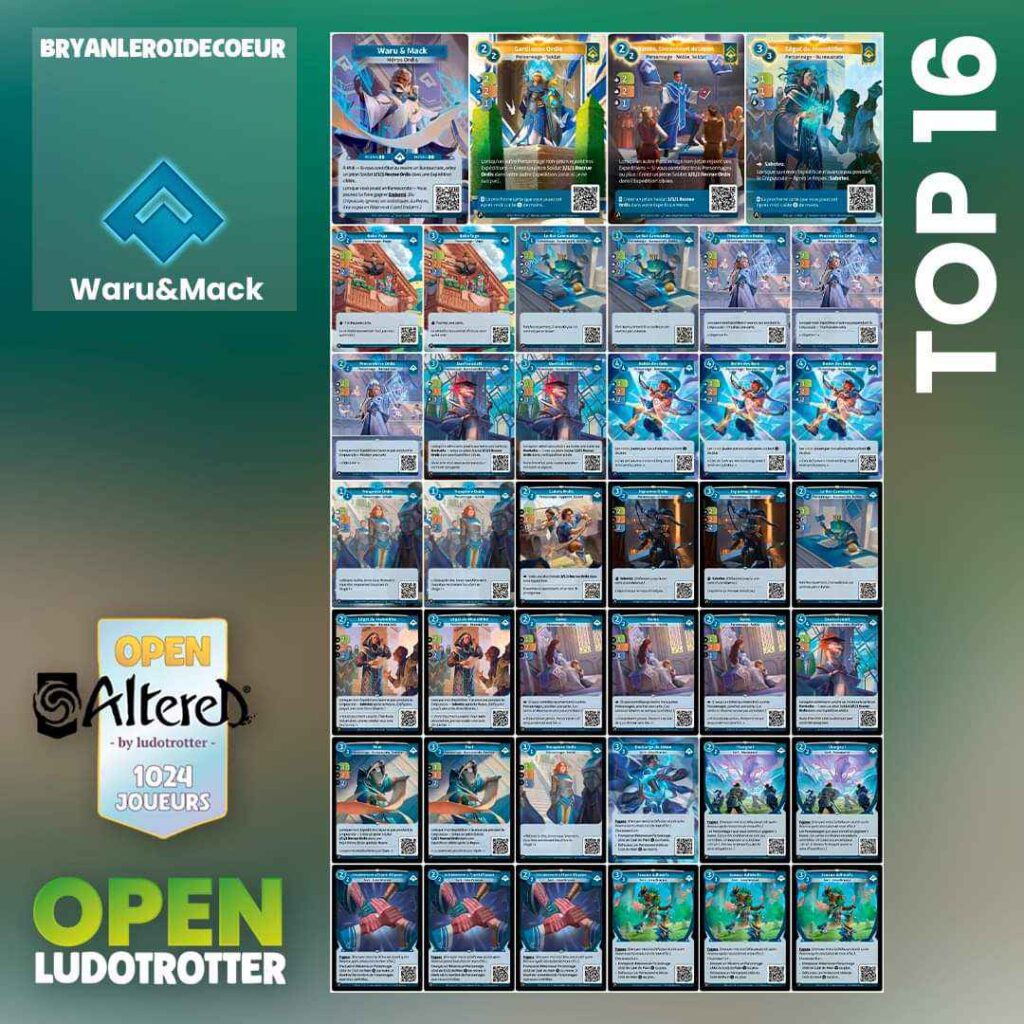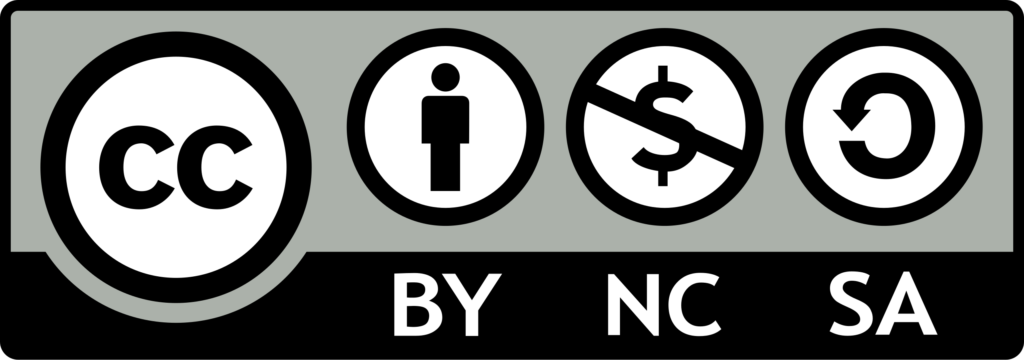Translated from French by Moira from an original article by Moira.
Hi Bryan
First of all, congratulations on reaching the top 16 in Angers! Before we get into the technical stuff, tell us a bit about yourself: how did you discover Altered? Is this your first TCG and what convinced you to take the plunge?
I’m originally a board game player, although I’ve always preferred games that use cards as their main material. I played a few TCGs very occasionally with friends who didn’t play much either, but I never really got into a TCG until Altered. I tried Altered with Print and Play in January and it was love at first sight. The mana system, the expeditions, the reserve and all the innovations from a digital point of view. Add to that the very colourful and original world in which the game is immersed and I couldn’t get enough of it. So I decided to go to a games bar to meet other players, and the friendly, supportive community was enough to convince me to go for it.
How did your preparation for the tournament go? Did you achieve what you set out to do? Anyway, I hope you had a good weekend!
I started training at the end of August by iterating on my decks. I began with preparing a deck to take to a boutique tournament, trying to identify its weaknesses and then modifying it for the next tournament until I arrived at the current deck. So it was a long-term process, which allowed me to arrive in Angers with a thorough knowledge of my deck and the different match-ups. Given that this was my first TCG and the first event of such magnitude that I was doing, I came with the objective of being in the top 64. Therefore my target was well exceeded.
You’ve played a hero who’s already shown his strength (and who continued to show his robustness in Angers), was it an obvious choice for you to play Waru?

I played my first game with Waru just two weeks before the tournament, so it was far from obvious. Up until then I’d been building a Teija deck, but the instability of its output and a crushing loss to Nadir (2nd in Angers) in a boutique tournament made me try playing Waru, if only to understand it and play better against it. But I fell in love with the deck, which reflects my style of play: cheap cards, lots of choice and control. So I spent two weeks fine-tuning the deck to come up with this result, which I’d change again if I had to play it again. During these two weeks I also tried Fen, which was very played, to understand how to play it and adapt my deck and my way of playing against it.
Let’s get down to the real heart of the matter: what was your decklist and game plan for this tournament? What do you think is special about your deck?
This is a low-cost Waru, since the most expensive card in the deck is Robin Hood and all the others cost 3 mana or less.
The objective at the start of the game is to create card advantage by drawing with the Attorney, Ozma and Baba Yaga while exhausting the opponent with the Monolith Legate, the Ordis Spy and the 7 control spells in the deck. During this time, I also make sure I don’t fall too far behind on expeditions with Quetzacoatl, Thoth or small characters. Once I’ve reached a threshold of between 6 and 8 mana, I’ve often picked up one of my uniques (Kakoba or Ordis Gatekeeper), a few characters that cost 1 or 2 mana and a Charge!. I take advantage of this to flood the field with tokens and end the game. The rare Frog Prince and Ordis Trooper make it possible to be aggressive from turn 1 or to prepare a set-up for teamwork-training or an Ozma on turn 2 without falling behind. Quetzalcoatl are there to put pressure on Fen decks. What’s special about my deck is that it takes advantage of Waru’s natural strength at the start of the game with its tokens, Robin Hood and control, while being powerful at the end of the game thanks to a large number of small cards and Charge!, which, along with my uniques, give it a huge strike force.

Did you have any surprises during the tournament? Any match anecdotes to share?
I was very happy to see that there were two Afanas and a Lindiwe at the top, two heroes I’m very fond of, Yzmir being my favourite faction. I’m pleased to see that uniques can make very strong and reliable archetypes that are often considered average or weak at the moment. I don’t have the weapons to build this kind of deck in my binder, but I hope to be able to do so in the future.
I was very happy to see that there were two Afanas and a Lindiwe at the top, two heroes I’m very fond of, Yzmir being my favourite faction. I’m pleased to see that uniques can make very strong and reliable archetypes that are often considered average or weak at the moment. I don’t have the weapons to build this kind of deck in my binder, but I hope to be able to do so in the future.
In the second round I played against Sigismar and we went through two rounds of Tie Break. I’d been keeping a Sticky Note in my hand since the start of the game in case he played something annoying, but at this decisive moment I’m one mana short of being able to play my army of small cards as well as a Charge!, which is fatal in Tie Break. What’s more, my opponent has a top deck and hasn’t played a single card costing 4 mana or more all game. So I put my Sticky Note into mana to end the game. The opponent plays first and plays this unique Achilles which prevents me from playing all my cards and causes me to lose the game. I was disappointed to lose by such a stupid mistake, but I learned from my mistake and was much more vigilant for the rest of the tournament.
What advice would you give to a player who wants to progress with Waru and improve their deck?
To progress with Waru, you have to play a lot of games and face all the match-ups to adapt your game to the opponent’s deck. For example, I’ll tend to try and put 1-0 or 2-0 on Sigismar on the first turn to sabotage him on turn 2, whereas I’ll go for 1-1 against a Fen and prepare a setup to manage his Aloe Vera or draw with Ozma on turn 2.
But the most important thing is to remain flexible and leave yourself as many options as possible during the game. Choose which side you’re going to let your opponent advance or not, put a character to sleep only if it will pay off on the next turn or if that character won’t be useful on that turn. Don’t hesitate to not put any mana early on in the game (5 or 6 mana) if this will exhaust your opponent and give you an advantage on the board.
But all this only becomes automatic after a certain number of games in each match-up. To improve your deck, you need to play your difficult match-ups and understand what the problems are in those games. This could be a strength of your opponent or a weakness in your deck. For example, Fen naturally has a card advantage with its effect and plays a lot with its reserve. We can therefore take advantage of her effect by putting a Quetzacoatl to sleep and ruin her advantage by using sabotage or control on her characters when they are fleeting to force her to empty her hand and take the upper hand.
Thank you so much for taking the time to answer all these questions! Do you have any final words to add?
I’d like to finish by thanking you for your time and all the players I met in Angers, both during and between games. It was a superb experience and I hope to be able to take part in another event of this type soon, with a new deck to present and new decks to face.
The work here (except Equinox content and pictures) is under Creative Commons Attribution-NonCommercial-ShareAlike 4.0 International.
Equinox, Altered, and their logos are trademarks of Equinox. © 2023-2024 Equinox. All Rights Reserved.


